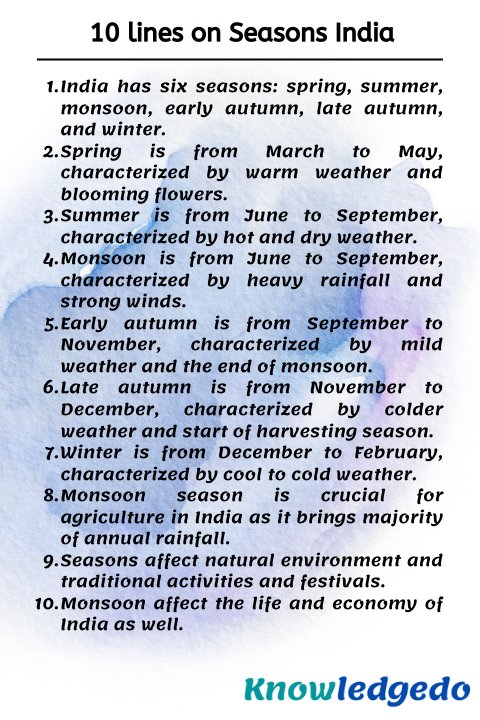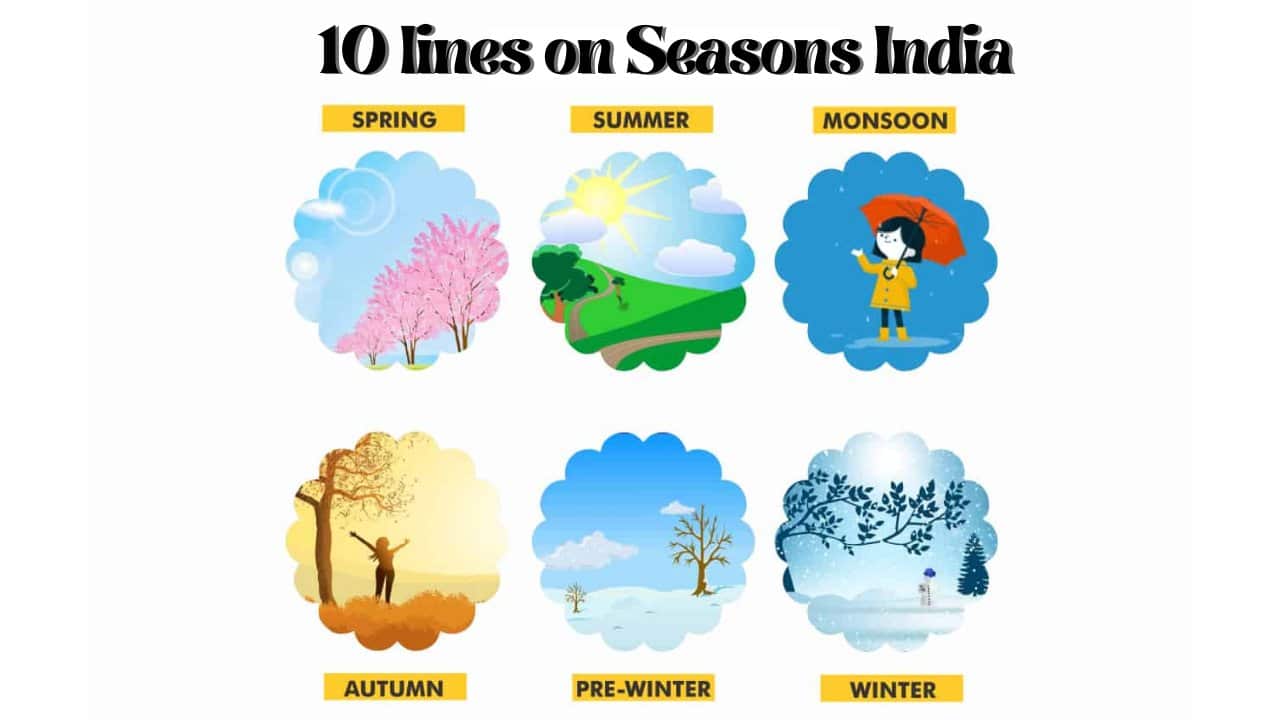Today, we are sharing 10 lines on Seasons in English This article can help students who are looking for information about 10 lines on Seasons. This essay is very simple and easy to remember. The level of this essay is moderate so any student can write on this topic.
This article is generally useful for class 1,class 2,class 3,class 4,class 5,class 6,class 7,class 8,class 9,class 10,class 11,class 12
10 lines on Seasons
1) India has six seasons: spring, summer, monsoon, early autumn, late autumn, and winter.
2) Spring is from March to May, characterized by warm weather and blooming flowers.
3) Summer is from June to September, characterized by hot and dry weather.
4) Monsoon is from June to September, characterized by heavy rainfall and strong winds.
5) Early autumn is from September to November, characterized by mild weather and the end of the monsoon.
6) Late autumn is from November to December, characterized by colder weather and the start of the harvesting season.
7) Winter is from December to February, characterized by cool to cold weather.
8) The monsoon season is crucial for agriculture in India as it brings the majority of annual rainfall.
9) Seasons affect the natural environment and traditional activities and festivals.
10) Monsoons affect the life and economy of India as well.

5 Lines on Seasons in India
1) India has six seasons: spring, summer, monsoon, early autumn, late autumn, and winter.
2) Monsoon is from June to September, characterized by heavy rainfall and strong winds.
3) Monsoon season is crucial for agriculture in India as it brings the majority of annual rainfall.
4) Seasons affect the natural environment and traditional activities and festivals.
5) Monsoons affect the life and economy of India as well.
FAQ
Answer: The six seasons in India are spring (Vasant Ritu), summer (Grishma Ritu), monsoon (Varsha Ritu), early autumn (Sharad Ritu), late autumn (Hemant Ritu), and winter (Shishir or Shita Ritu).
Answer: The monsoon season is crucial for agriculture in India, as it brings the majority of the annual rainfall for the country. This rainfall is necessary for the growth of crops such as rice, wheat, and sugarcane. Monsoons also affect the sowing and harvesting of crops.
Answer: Seasons in India also affect traditional and religious activities and festivals in India, like Holi, Diwali, Onam, Pongal, Baisakhi, and many more. These festivals are often tied to the changing seasons and the agricultural cycle, such as the harvest festival of Pongal during the winter season.
